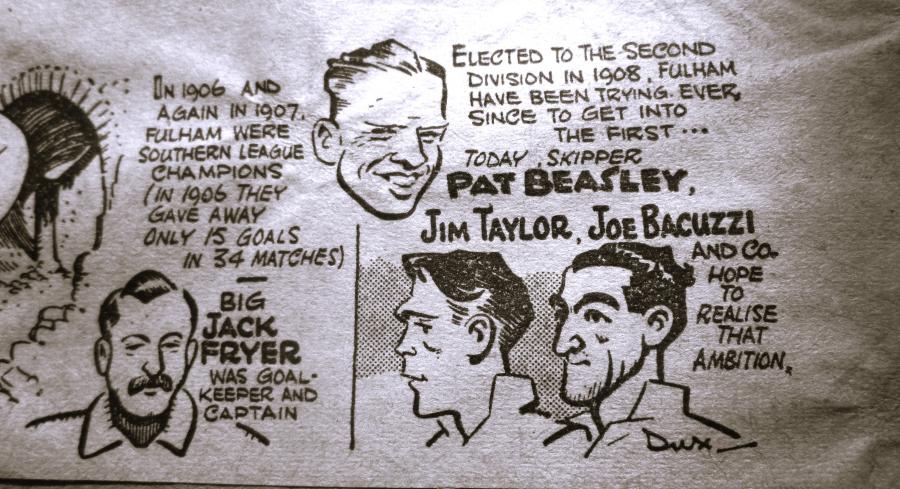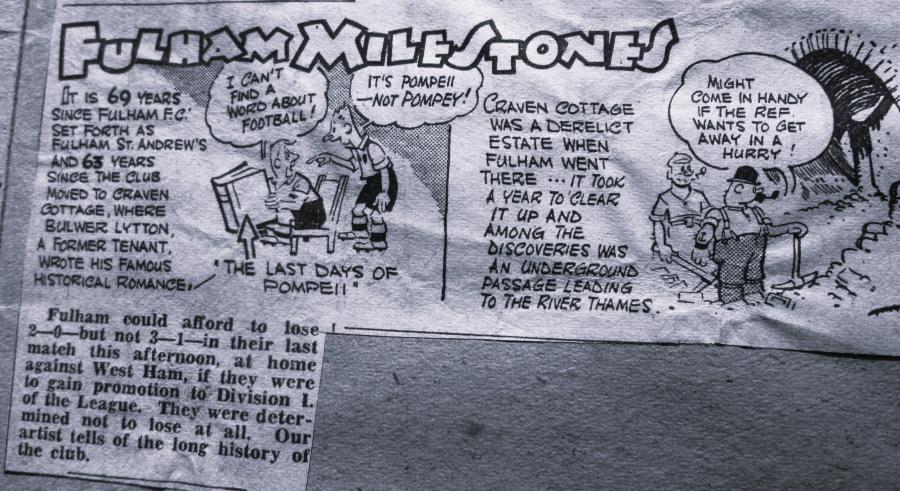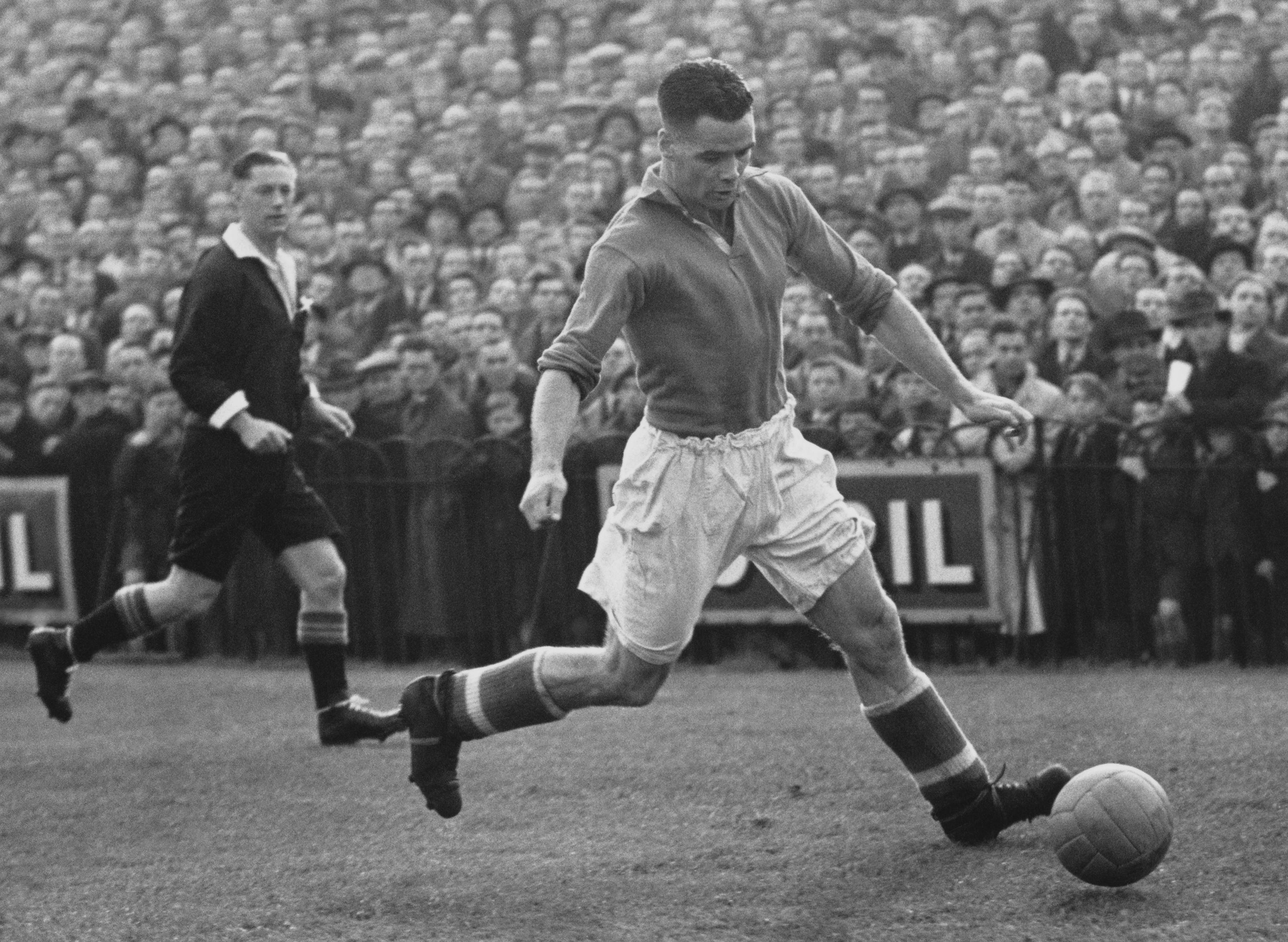April marks my 75th year of supporting Fulham.
When I started, the club was in the doldrums. Its telegraphic address 'Fulhamish' seemed to convey its quirky nature – warning people to expect the unexpected. Despite a good FA Cup run, the team had spent most of the season in the bottom half of the Football League's second tier and had not won a home League game since the beginning of January 1948.
This failed to dampen my excitement as I prepared to watch my first big match at Craven Cottage. My parents – both long-time supporters – had already taken me to a reserve game there and I was totally hooked.
Oh, those innocent days. Still bearing the scars of wartime bombing the ground had minimal security – no searches on entry, no bans on flags or rattles (as happened in later decades) and thousands of spectators standing unsegregated on the three open, dilapidated terraces. Actually, I was forbidden to take a rattle, but that prohibition came from my sister, not the police. My parents opted for the Stevenage Road grandstand where we sat on the hard wooden benches, vintage 1905.
These days, hopeful supporters hold up placards at the end of the match asking players to donate an item of kit. Back in 1948 it was the other way round – the footballers could rely on the fans for a spare pair of stockings, a relic of the wartime tradition of civilians knitting socks for the armed forces.
My first match
The visitors that April day were Millwall. Fulham wore their traditional black and white colours. I was spellbound by goalkeeper Ted Hinton in his green jersey, and it is comforting now to read a match report confirming that 'Hinton was in great form in goal and with Bacuzzi he starred for the home side'.

The popular Joe Bacuzzi was the 31-year-old left-back who had made his League debut for Fulham three years before I was born. After his final appearance in November 1954, he became assistant trainer at the Cottage.
On that April day in 1948, he created the only goal of the match by running with the ball up the left and centring for a team-mate (Bob Thomas) to convert – standard practice these days for Antonee Robinson but radical in 1948 when full-backs were meant to stay in their own half of the pitch.
The local reporter was unimpressed by the home side's victory: "Not once in the 90 minutes were the Cottagers really on top and Millwall had only themselves to blame that they did not take both points." (In those days the winners were allocated a meagre brace.)
Admittedly, it does sound as if the East Londoners were in a generous mood as instanced by their defender George Fisher: "When he was heavily but fairly charged by Dave Bewley, he picked himself up to Bewley with a right hand extended for a handshake." Watch his left, Dave.
Looking back
I loved every minute of that game, and I was hooked from the on. Like most children of the period, I kept a scrapbook and though it soon ran out of steam it does contain a few gems like this potted history from May 1949 – see below.

OK, we know now that Bulwer Lytton did not write 'The Last Days of Pompeii' at the Cottage. But I quite believe the tunnel story.
Many homes for the rich had an escape route in case of revolution. The Golden Lion in Fulham High Street, still favoured by many supporters, was built on the site of a Tudor house complete with tunnel. Sadly, the story has long been discredited that Richard Fletcher (Bishop of London 1895/96)) used it to have a sneaky pint in the pub with his son the playwright John Fletcher and various other celebrities including William Shakespeare.
However, the Bard of Avon may well have visited Fulham in his lifetime because a friend of his, the actor David Condell, lived very close to the High Street. Four hundred years ago Condell and John Heminge gathered together all of Shakespeare's plays, and edited and published them (The First Folio) so that there was a single, complete, authentic version of each one.
If they had not done so, works like 'Antony and Cleopatra' could have been lost forever. Shakespeare may have asked them to do this (he remembered both in his will) but what a task. Each play had to be written out by hand.
It was a crazy, brilliant effort on the part of Condell and Heminge – so Fulhamish.
The views expressed in this blog are those of the author and unless specifically stated are not necessarily those of Hammersmith & Fulham Council.
Want to read more news stories like this? Subscribe to our weekly e-news bulletin.

